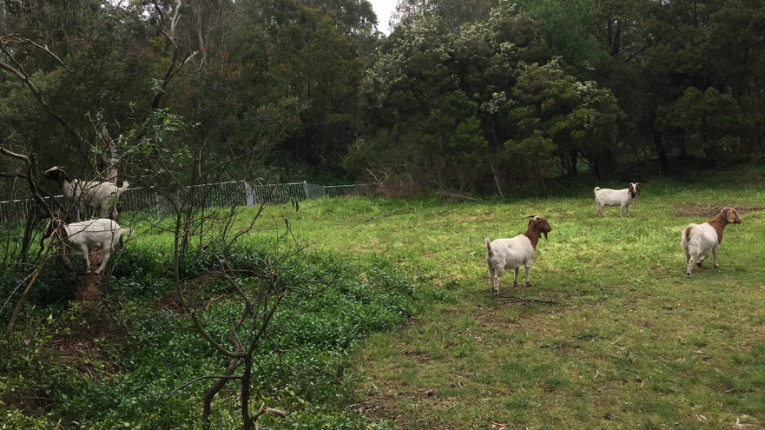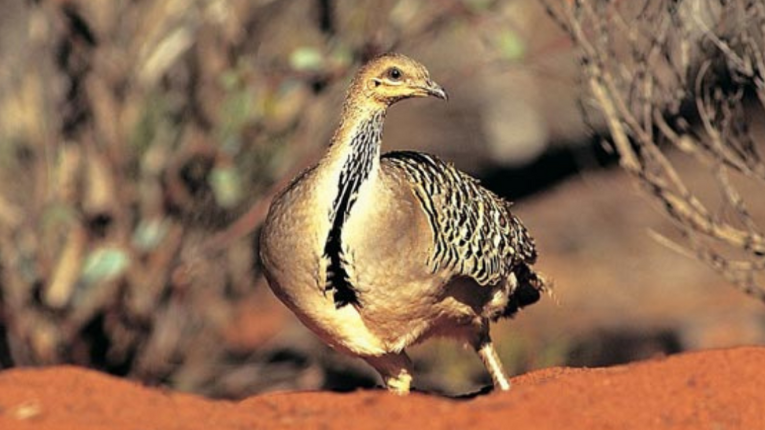Environmental protection and enhancement through land management, biodiversity services and the use of technology is a key focus across our Defence portfolio.
In line with our Sustainability Strategy, our goal is to embed environmental management excellence in all our workplaces and to take the lead in environmental protection and enhancement solutions.
Landscape management plans (LMPs) are critical to this goal, accounting for practical requirements such as better resource allocation, and integrating a range of control options, such as mechanical, chemical or biological means to reduce the severity of weeds, assist with native regeneration, and to support and control wildlife.
Using best-practice guidelines, combined with an intimate working knowledge of the drivers of ecosystems and landscapes, we support landowners and managers to develop and implement sustainable landscape management plans.

Pictured above: Drones being used for ecological surveys, Cultana, South Australia
Protecting vulnerable species - safely
Surveying weeds, feral animals, native species and other flora and fauna across large areas of land that are not accessible by foot can be challenging, unless you're a licensed drone pilot like Ventia's Senior Ecologist on our Defence Base Services (DBS) contract, Katie Selhorst.
Katie moved to Australia from the United States in 2010 and obtained her Master of Conservation Biology Degree from UNSW in Sydney in conjunction with Victoria University in Wellington New Zealand.
'From an ecological standpoint, Australia is the world's most amazing biosphere,' Katie says. "One of the things I love is that the evolution of the flora and fauna is both unique and beautiful."
Katie says one of the benefits of using drones in the surveying is the lack of disruption to native animal populations.
"You can cause stress to the animals while conducting various survey methodologies. These ground surveys unintentionally cause the animals to move while walking the transects as you're on their turf," Katie explains.
With drones, we can use thermal imaging, which doesn't bother the animals in this instance, removing that stress factor but also meaning we get a more accurate picture of the species density and locations on base.
There are projects underway across many Defence sites which are exploring the most effective ways to identify, track and protect vulnerable species.
Tyson Lowe is a member of our Drone Solutions Team and has been working with Regional Manager Giles Standish in our Defence team on efficient and less intrusive tracking of the local Malleefowl population in South Australia.
Giles was aware that these ground-dwelling birds are apparently quite shy and rarely seen, so had suggested use of LiDAR and thermal scanning.
As the Malleefowl are present across 850 hectares of a client's site, by using LiDAR and thermal scanning we can detect their mounds and get an indication of activity.
"LiDAR stands for Light Detection and Ranging and it's a remote sensing method that uses light in the form of a pulsed laser to measure ranges," Tyson explains. "We use it where high accuracy mapping is required."
"The Malleefowl is listed as a vulnerable species, so it's important to measure and track the population and put actions in place to reduce disruption to their habitat."
Tyson further explains that thermal scanning, which detects heat signatures, is used at night given there is a higher contrast between the cooler night air and the heat of the birds' bodies.
The more we can use technology to reduce risk and improve safety for our people, as well as minimising our interaction with the fauna and flora we want to protect, the better.
Pictured above: Goats being used for weed management at Simpson Barracks
Weed management
Weeds represent a major threat to the natural environment. It's estimated they cost farmers more than a billion dollars each year in control activities and that more than two billion dollars is lost in agricultural production. While the true cost to the environment is difficult to calculate, it may be similar to or even greater than the cost to agricultural industries*.
With a changing climate, where rainfall and wet seasons are detrimentally affected, the impact of weeds is expected to worsen, placing further stress on the environment, and in turn, food and water security. Landowners and managers have a duty of care to the environment, to manage it in a way that protects and sustains it. They also require support in reducing the impact of exotic species.
In Victoria, weed management across difficult terrain poses health and safety risks as well as being complex, time consuming and potentially expensive. At Ventia, consideration has also been given to ways to reduce the impact of chemical use on the environment, particularly in waterways.
Over the last two years in locations such as at Simpson Barracks in Yallambie (north-east of Melbourne), the use of goats for weed management has proven very successful, providing the Department of Defence with a long term, environmentally friendly solution for managing priority-one weeds within riparian zones (land alongside creeks, streams, gullies, rivers and wetlands) and waterways.
Jemma Dutton, Regional Manager Environmental Services (Victoria and Tasmania) says this integrated weed management approach allows for weed control and native re-vegetation to occur simultaneously.
There is reduced risk of unintentional damage of flora other than the targeted weeds, which can occur from chemical use, Jemma says. We've also found the use of goats is effective in reducing erosion by walking en-masse across vegetated areas and creating pockets with their feet where seeds can become established.
"In addition to restoring plant life and biodiversity, this also reduces water runoff and active erosion."
Jemma says that other species which her team have had success in controlling at Defence sites across Victoria include weeds of national significance (WONs) such as blackberry, Serrated Tussock and Chilean Needle Grass.
"Using goats or potentially biocontrol methods, such as weevils, instead of harsh chemicals allows us to see wetland plant species emerging within previously infested areas and native ground cover rejuvenating," Jemma explains.
Jemma says that goats have been successfully integrated into land management programs across Victoria with the help of community groups, who benefit from the program along with local landowners.
"This is all good news for land management programs in our Defence portfolio."


